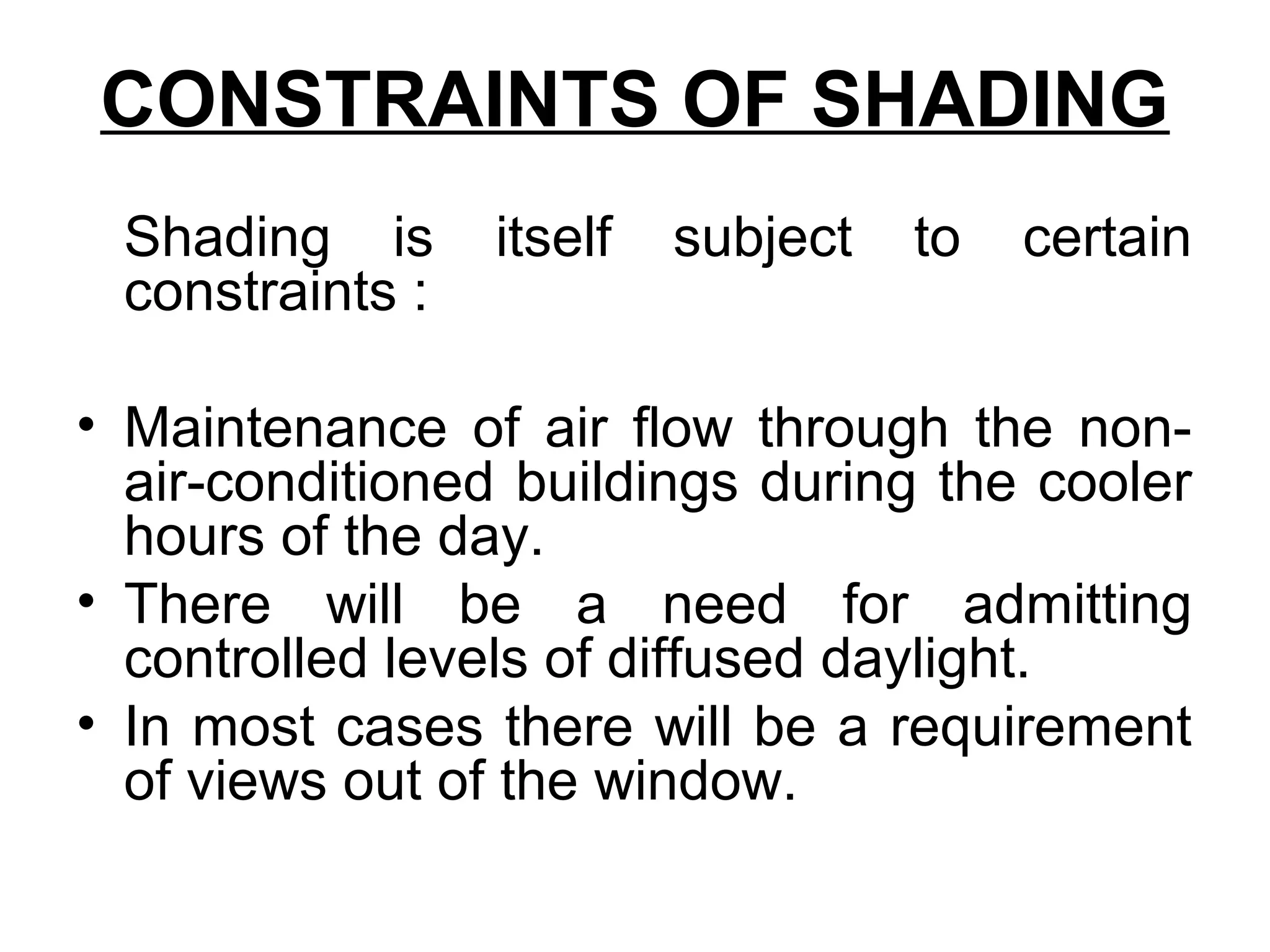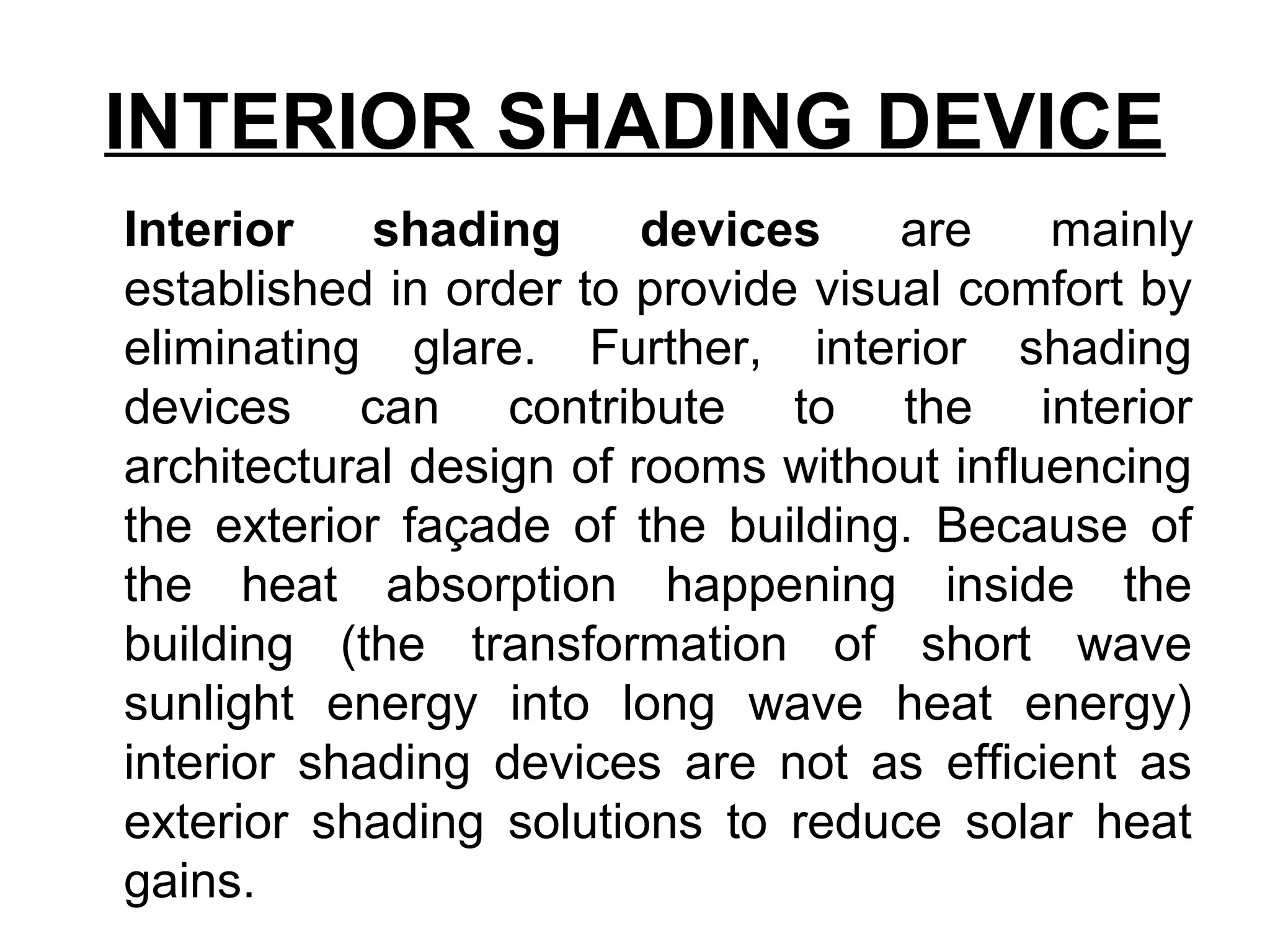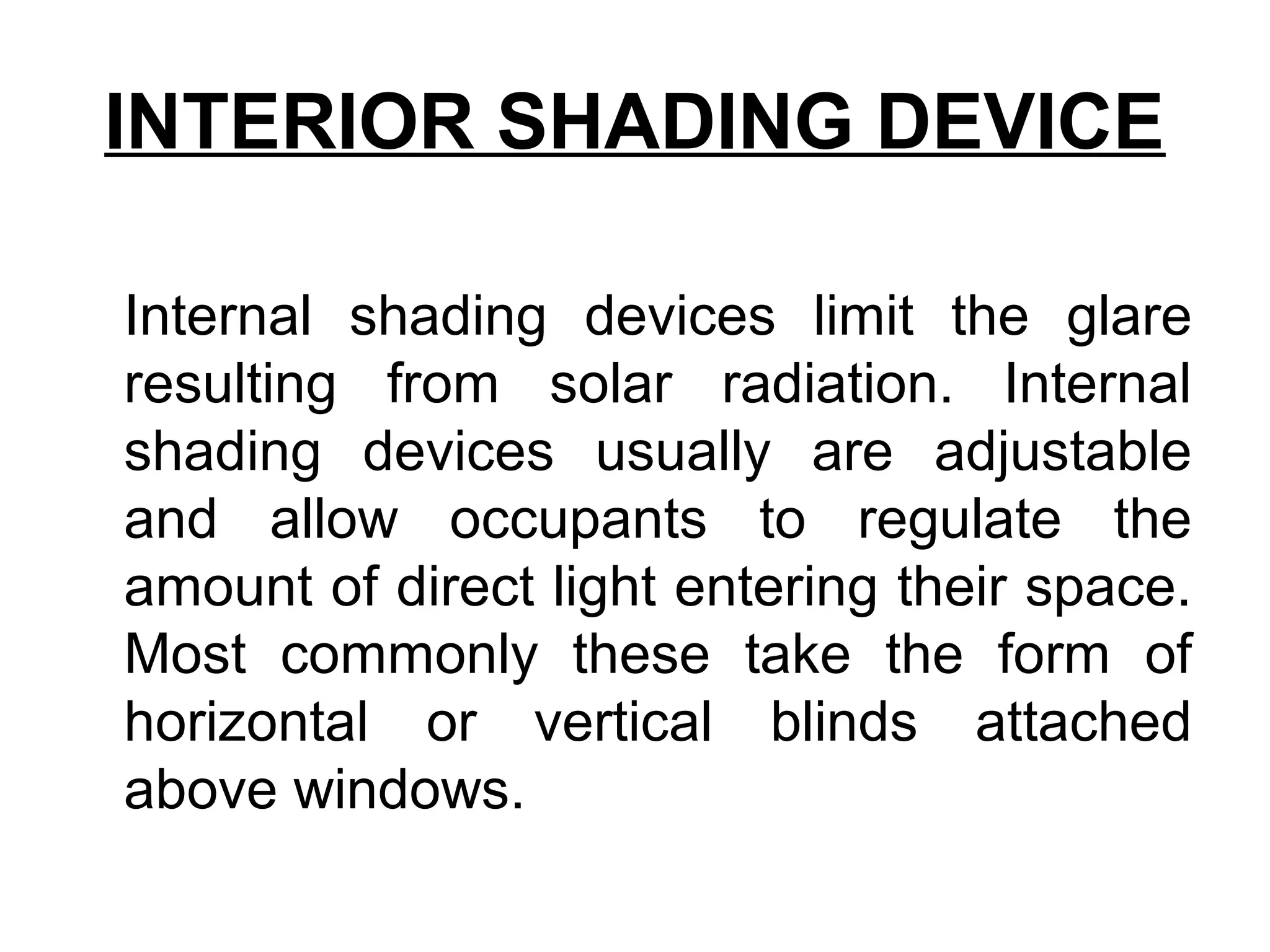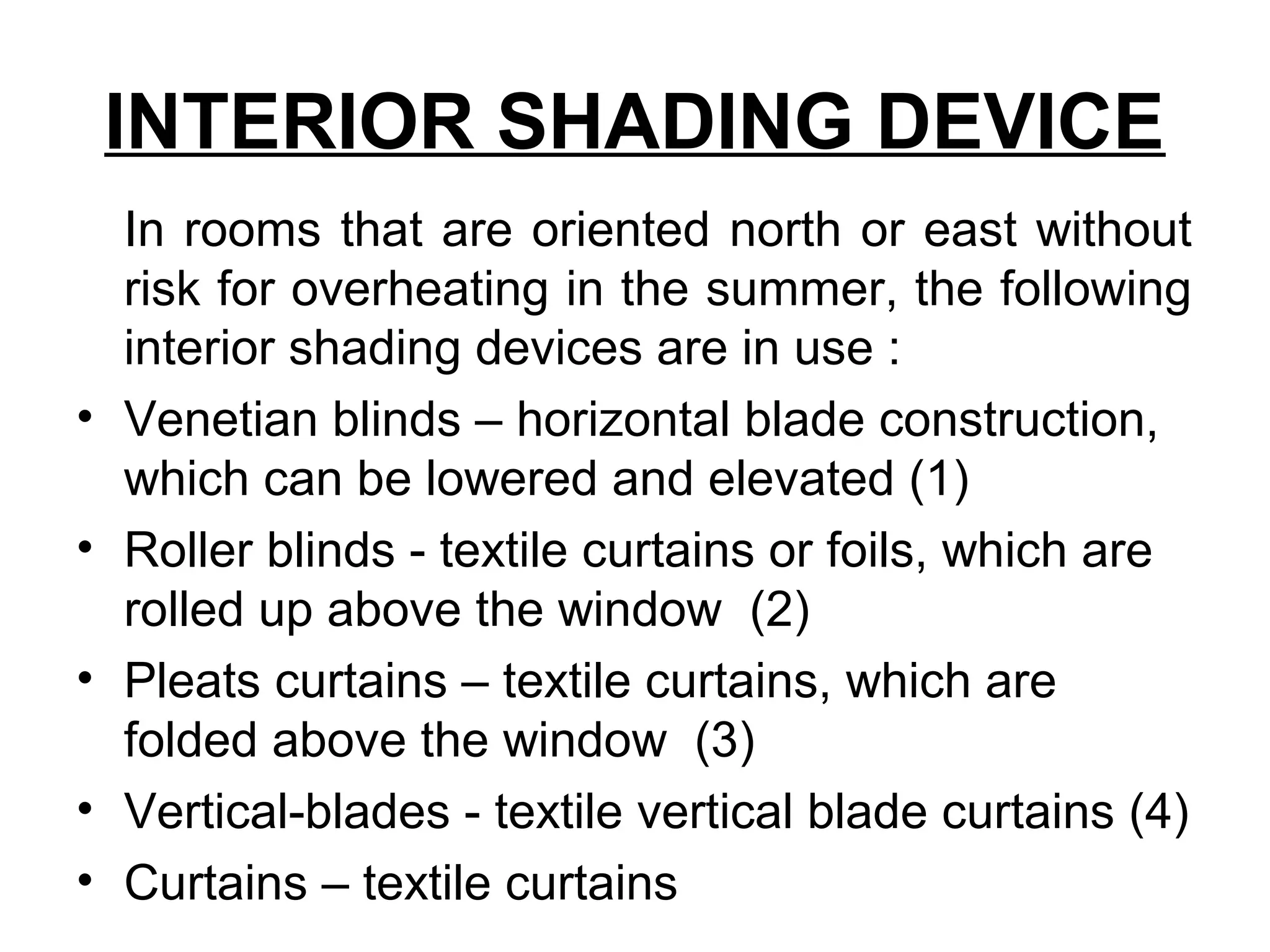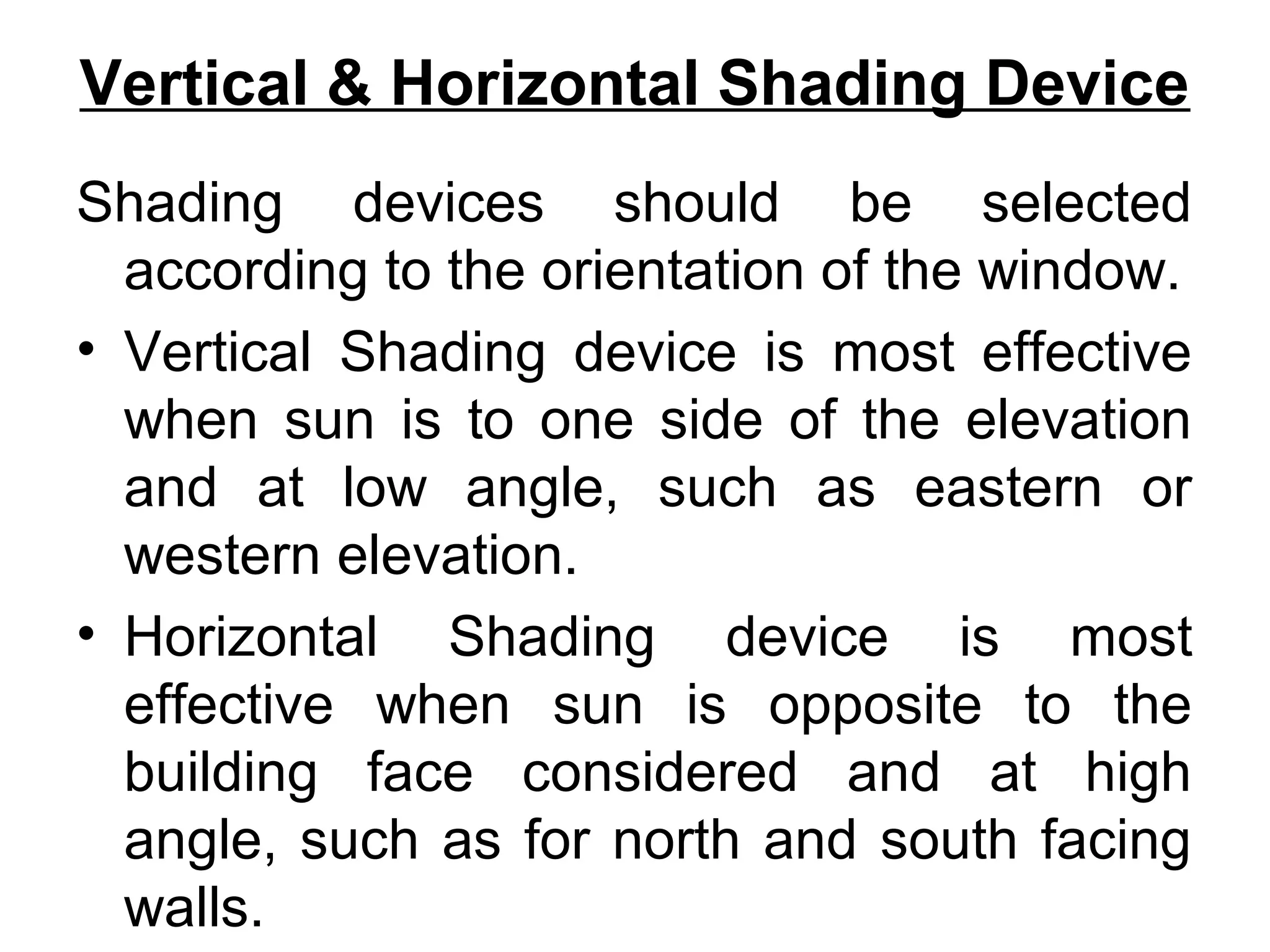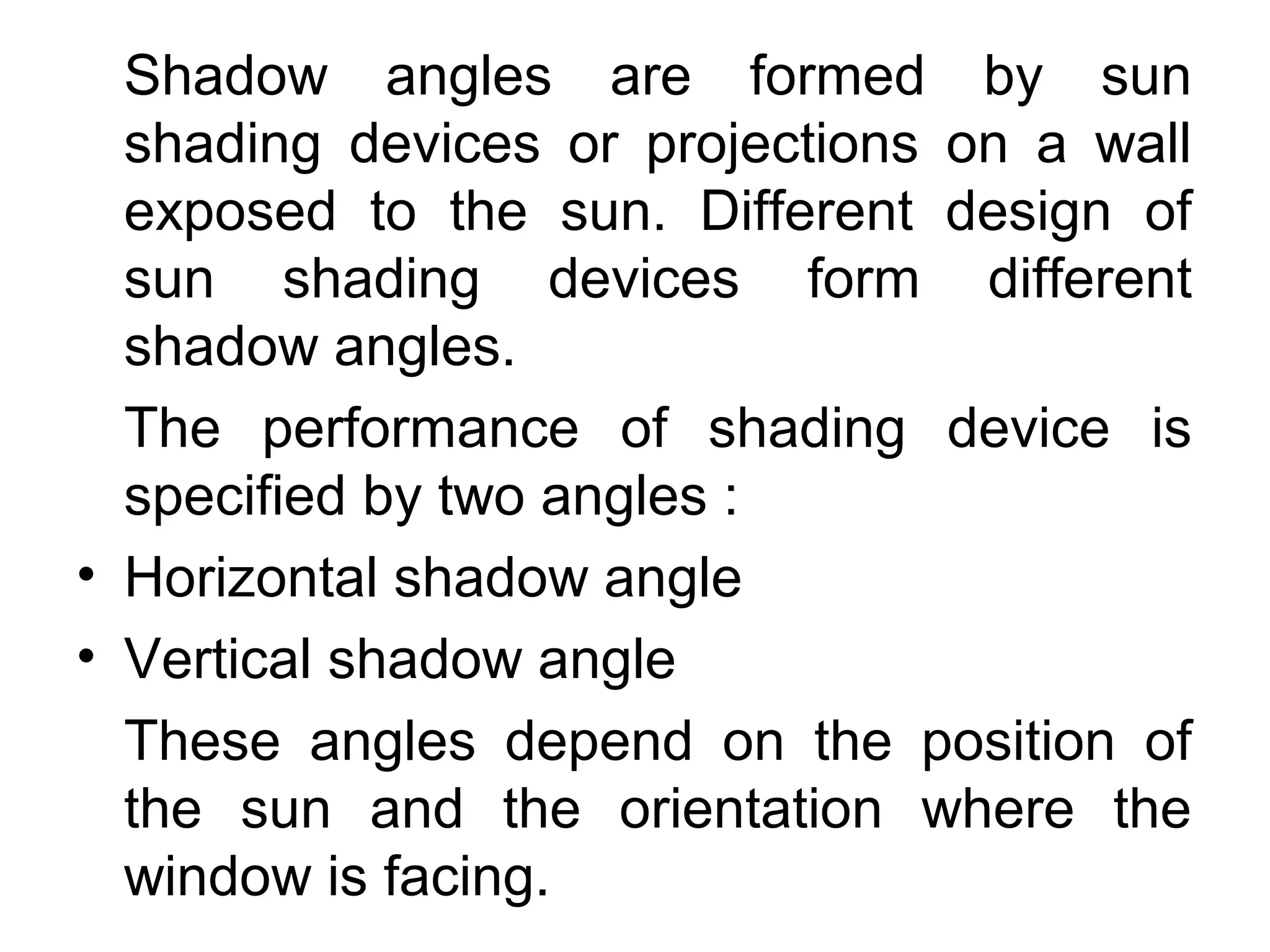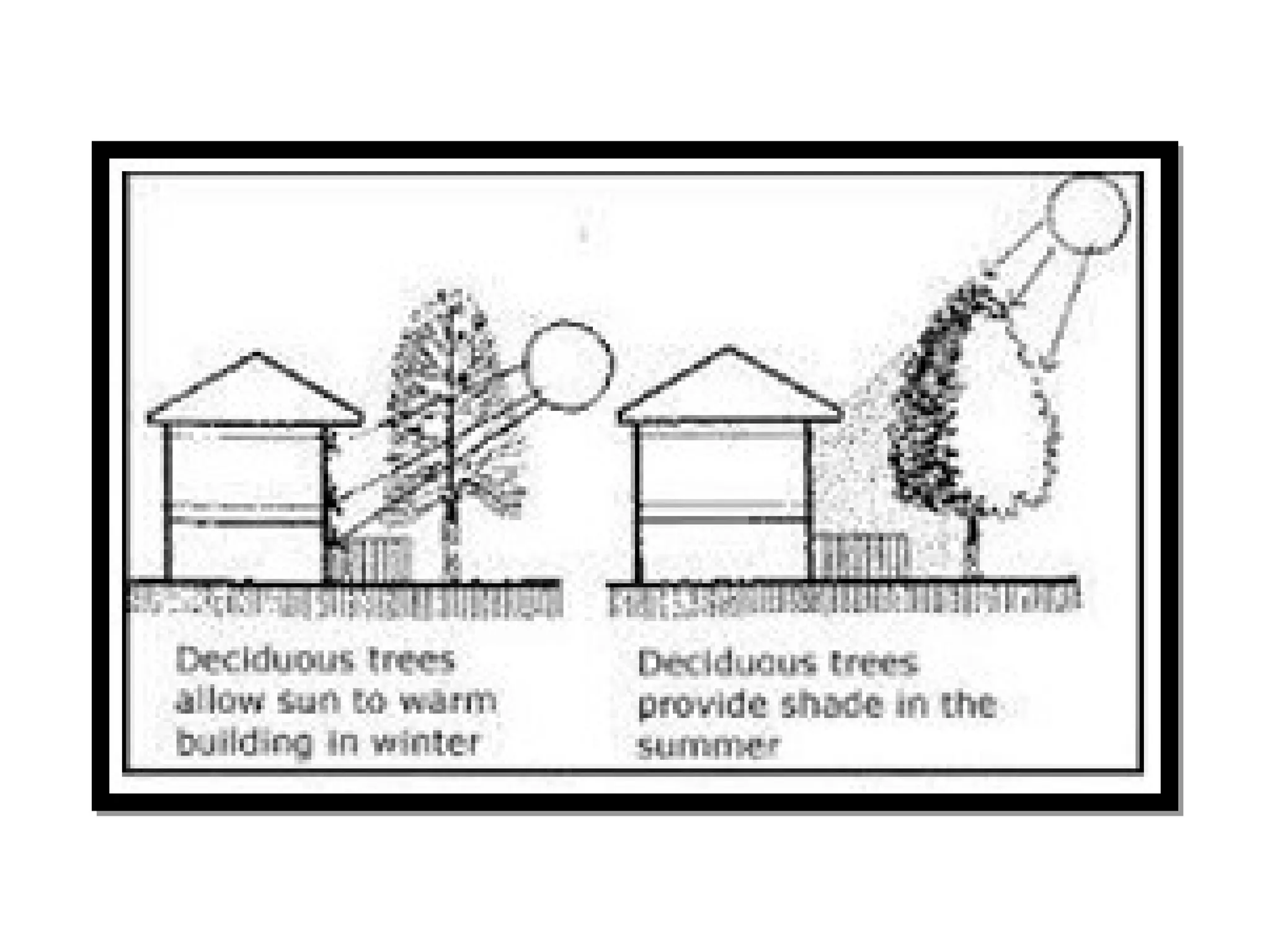The document discusses solar control and shading. It begins by explaining that shading is needed to prevent solar radiation from contributing to discomfort when temperatures are within or above the comfort zone, but may be desirable to allow solar heating at cooler times. There are three effects of solar radiation entering a room: heating surfaces, increasing mean radiant temperature, and causing glare. The function of shading is to eliminate these three effects. Shading design must consider factors like air flow, daylight admission, and views. Exterior shading is most effective for solar control while interior shading provides visual comfort and control. The document provides details on types of exterior and interior shading devices and their effectiveness.




